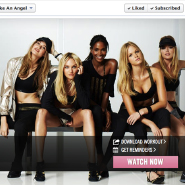 On November 1, Victoria's Secret launched the first ever nationwide mobile messaging campaign in the U.S. using rich media messaging to boost awareness for its new VSX line. The rich media is being used to offer consumers video content, as well as other exclusives for its new VSX Sport line. For example, the company is promoting their VSX Sexy Sport brand by sending workout tips through their video series, "Train Like An Angel". These tips are delivered directly by Victoria Secret models, "The Angels," to teach women how to stay in shape.
Cezar Kolodziej, president/CEO of Iris Mobile, Chicago remarked, “Rich media messaging is the only mobile technology that allows Victoria’s Secret to deliver videos on all mobile handsets and carriers." Victoria's Secret would not be able to reach all of its customers on the various mobile phones using SMS. In addition, mobile messaging allows users to view the video content whenever and wherever. Also, mobile messaging enables the Victoria's Secret to continue its dialogue with consumers and keep them up-to-date on new products.
In addition, the company is also highly relying on Facebook to help spread the word. On Facebook, consumers can learn more about the VSX Sport Line. Fans can click on the "Tough Like an Angel" tab to browse workout videos and check out expert fitness and nutrition tips. The campaign revolves around asking women to join the challenge. Also, Victoria's Secret is encouraging consumers to stay connected by signing up for text alerts to keep up-to-date on the latest challenges.
Victoria's Secret's mobile messaging strategy along with the incorporation of Facebook is a smart campaign to promote its new VSX Sport Line. Women aspire to look like the Victoria Secret "Angels"; therefore, consumers are going to want to opt in to receive text alerts that provide weekly tips and keeps them up-to-date on the latest challenges. Meanwhile, they also receive information about the VSX fashion line. This is a great way to expose their VSX Sport line and get consumers interested in purchasing the products. Social media provides another outlet to engage its consumers and create interaction between the customer and the company as well as between customers. Facebook offers consumers the ability to ask questions, make comments, and share content to their friends further driving engagement.
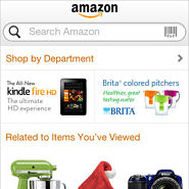 “There is no disputing – Amazon is a powerhouse,” said Eric Newman, vice president of products and marketing at Digby. "According to Forrester Research, year-over-year ecommerce growth has held steady in the low digits for the past several years, but Amazon’s North American sales growth has outpaced those figures since 2007.” What is so special about Amazon? The company keeps shoppers coming back regularly. One of the primary reasons why consumers go to Amazon to shop is for price comparison. Amazon makes it extremely easy for users to look up an item; users can type in a keyword, scan a mobile bar code or snap a picture of an item for Amazon to match. However, Amazon is not just for price differentiation. The company has intelligently built its apps and mobile website around search, merchandising and check-out. Amazon's search bar, which is placed prominently at the top of the mobile site and app, is an important feature that lets consumers quickly navigate through Amazon’s vast amount of inventory. In addition, Amazon differentiates itself from other retailers by displaying shipping options as the first criteria when consumers filter their search results. The company's merchandising is simple and convenient. For example, if users have an Amazon account, when members log-in, the homepage shows recommended products for consumers based on their browsing and shopping history. This personalization is key to help consumers quickly cut through the clutter and helps build relationships with consumers. Amazon's check-out is also simple. Amazon accounts are linked across different devices, so that if a user has an Amazon account it saves his or her's shopping behavior across desktop, mobile and tablet screens. For example, users who add an item to their shopping cart on Amazon’s website will also see the item added to their shopping carts on Amazon’s mobile site and apps. Because Amazon can track a user’s experience across multiple screens, the company is able to create a more personalized and convenient shopping experience for users. Amazon is one of the few retailers that gets cross-screen marketing. It is clear amazon's mobile strategy puts consumer convenience at the core. This is threatening to traditional retailers. Furthermore, Amazon is trying to be even more competitive. The company is quickly advancing toward same day delivery, and Amazon is planned to open storefronts in major metropolitan areas. Moreover, the firm is tapping into new categories, and has discussed entering home improvement, automotive, insurance, travel, consumer credit and even photo developing. If brands are smart, they should look at what Amazon is doing to continually take the shopping experience to the next level.
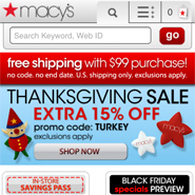 Digitas recent study indicates mobile is changing how people are connected to brands and commerce. This is evident in consumers responses about their plans to shop on Thanksgiving. According to the study, "28 percent of smartphone or tablet-owning adults plan to shop on Thanksgiving Day for the holidays with their mobile devices. This will be nearly double the percentage from 2011." According to the study, retailers are embracing “Mobile Thursday” by early store hours or online sales. For example, eBay is beginning mobile-only deals at 5:23 p.m. on Thanksgiving Day. Mobile is also effecting college kids. 38% of students reported they will do holiday shopping on Thanksgiving and 22% are more likely to decline a Thanksgiving meal invitation if they are prohibited from using their mobile phones while there. Chia Chen, New York-based senior vice president and mobile practice lead at Digitas commented, “I thought that if there is one institution that could withstand our increasing need to always be connected, it would be Thanksgiving. But it just indicates how much mobile is changing behaviors, attitudes and culture.” I am not the only one surprised that people are willing to go as far as declining a Thanksgiving get together in order to stay connected. Last year, eBay and PayPal both predicted that Thanksgiving Day 2011 would be a day when consumers went from their dinner table to their couch to start their holiday day shopping on Thanksgiving Day on their mobile devices. They termed this couch commerce. Both companies saw a 511 percent increase in global mobile payment activity than on Thanksgiving Day 2010. This holiday season, PayPal predicts couch commerce will explode even further. According to the executive, "PayPal sees consumers shopping from their mobile devices during the hours of noon to 1p.m. and users turning to their tablets from 6-7 p.m." This shows that the way people shop from their devices is different. However, the main point is that consumers are using technology in new ways to try to find the best deals and therefore is changing what retail means and how people shop. Cyber Monday is also a big day for retailers. A recent study by PriceGrabber revealed that "when consumers who plan to shop on Cyber Monday were asked to specify from where they plan to shop, 83 percent indicated home, 11 percent said work and 6 percent said they will shop on the go from a mobile device." Although 6% seems relatively low, this number increased by 2% from the previous year and is believed to continue to increase this holiday season.
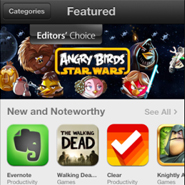 With all the hype about mobile apps, the amount of mobile apps is increasing rapidly as marketers keep throwing out various apps because they feel it is something they must have. However, an app does not make sense for every brand and simply launching a mobile app is not enough. Brands need to support it with marketing and social efforts to draw awareness and keep consumers engaged after the app is downloaded to their device. Due to the excessive amount of apps, a big challenge in mobile is application discovery and awareness.
What's more is often consumers download an app, use it once and then delete it. Chris Mason, co-founder/CEO of Branding Brand, Pittsburgh stated, “The best way to avoid deletion is to make sure your app is not worth removing,” he said. “Building an app that truly services loyal customers and automatically updates are the two fundamentals to success.” In other words, marketers need to give users the right experience and a reason to come back in order to overcome app deletion. Craig Palli, vice president of business development at Fiksu notes, "There are two main reasons people delete your app - they don't like it, or they don't use it." The first reason results from not meeting users' expectations. This could be due to a misleading landing page, the functionality was not as good as expected, or it doesn't work well. The latter reason, someone deletes it because they don't use it, could be because they don't have a reason to keep using it although they like it and it works fine. Thus, discovering and addressing the problem is the key in the ongoing development and maintenance of apps. Furthermore, according to Patrick Stack, manager of digital strategy at Acquity Group, "a key issue brands and marketers face is not so much growing rates of app deletion, but rather that the average growth of smartphone users downloading apps is slowing." This is primarily because consumers most likely to download apps and give them a try are the younger generation and they already have. Smartphones are growing with older users who are less comfortable downloading apps or trying new forms of technology, so they are less likely to search for and test out brands’ apps. Additionally, Stack points out another growing problem for brands and marketers in regards to apps is that mobile browsers are becoming more sophisticated. He states, “As HTML5 adoption grows, there will be lesser need for a native app because users will have an equally powerful experience on their mobile browser.” In sum, it is important not to get caught in the hype of mobile apps. Brands should consider how their customers relate to their brand. The next step then is to translate that into how brands can create value for their consumers. Money might be better spent on a mobile web site.
Tamara Roukaerts, head of Marketing at Aurasma, London remarked, “One of the great things about augmented reality is that for the first time, it offers people the chance to have best of all worlds – print, digital and mobile.” “We think augmented reality is the first digital technology to actually support print, rather than cannibalize it.” Understanding that people still love print but are being drawn away by the interactive, real-time content web and mobile offer, British broadcast network Channel 4 created a free app that combines the multiple platforms to build hype for Jamie Oliver's new cookbook and TV show.  Jamie's 15-Minute Meals app lets fans of celebrity chef Jamie Oliver interact with cookbook content through their smartphones. For example, users can open the app and hover their phone above "Jamie's 15-Minute Meals" to unlock content for 116 dishes in the cookbook. In addition, scanning a mobile device over a page brings up a digital meal card that includes ingredient and nutritional information. Through the app, users can also set calendar reminders to watch the TV show. Other behind-the-scenes video content can also be unlocked from the app. For example, users can preview clips from 80 meals that the chef will feature on his TV show. The app includes a call-to-action to show users how to use their mobile devices with the app.
With more consumers using their mobile phones for everyday tasks such as cooking, this augmented reality experience connecting multiple mediums through "The Jamie’s 15-Minute Meals app" is a great way to engage its audience. In addition, this app does not affect those who do not want to partake in this experience. This is a key because they can still use the cookbook and enjoy the TV show without feeling alienated. Augmented reality simply adds another dimension to print and therefore will continue to foster interest among marketers in order to add value for consumers.
Mobile retail has increasingly become an out and in-store phenomenon. According to comScore, “More than half of the U.S. smartphone population used their phone to perform retail-related activities while in a brick-and-mortar store, bridging the gap between the physical and digital worlds.” This poses a serious problem for retailers as they are forced to compete with others for the sale while consumers are inside their store. ComScore states, “The challenge for retailers will be to develop marketing strategies that recognize how their audiences are using mobile devices while shopping and look for new opportunities to use these mobile habits to their advantage.” If retailers fail to address this new reality, they will risk losing sales. A report by comScore looks at the most popular in-store smartphone behaviors. Research found that “1 in 5 U.S. smartphone owners took a picture of a product while in store and nearly the same number texted or called family or friends about a specific product. Nearly 1 in 5 scanned a product barcode, while 12.1 percent of all smartphone owners used their phone to compare product prices while in a store. Finally, nearly 10 percent used their device to find coupons or deals.”
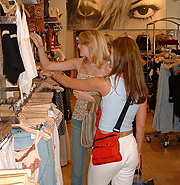 A study from Accenture also demonstrates this phenomenon, which is likely to play a key role in the upcoming holiday shopping season. The Accenture Holiday Shopping Survey found that “27 percent showrooming shoppers will likely make an online purchase using their smartphone or tablet while they are still out shopping.” In addition with “56 percent of shoppers saying they will compare prices online using a smartphone.” This is a real concern for retailers often coercing them to match online prices. This trend also demands retailers to strengthen their customer service and product availability if they want to fight back against showrooming. The report also found that “the use of tablets and smartphones to make holiday purchases is on the rise, with 25 percent of consumers planning to use these devices to buy holiday gifts, compared to 17 percent in 2011.” The findings show Cyber Monday will again be a big day for online and mobile retailers. According to the Accenture survey, “34 percent of consumers say they are likely to shop on Cyber Monday. Of these, 45 percent will be looking for free shipping offers from retailers while 40 percent will do so because they feel the best online deals will be available.” As mentioned before, in order for traditional retailers to combat the shifting shopping paradigm, they need to focus on creating a personalized shopping experience and make the store in environment a place in which shoppers want to linger. In other words, give them what mobile and online shopping cannot.
Dunkin' Donuts is an example of a company who demonstrates novelty mobile efforts and understands the importance of engaging consumers with a creative interactive experience. Dunkin’ Donuts new mobile campaign utilizes Instagram and Twitter and capitalizes on Halloween-themed initiatives in order to drive consumer engagement as well as to educate them about the company’s new mobile payments application.
The company’s Halloween treats and famous coffee makes Dunkin’ Donuts a popular destination during the holiday. According to Scott Hudler, vice president of global consumer engagement at Dunkin’ Donuts, "We wanted to capture the same spirit of the season that people enjoy in our restaurants to our digital channels as well." Dunkin Donuts does just that.
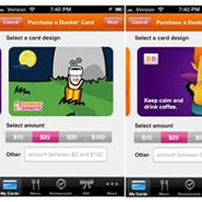 As part of the campaign, to drive awareness for the company’s first mobile payment and gifting app, consumers are offered with limited edition Mobile Dunkin’ Donuts cards featuring several unique Halloween themed designs, including cartoon images of jack-o-lanterns lit by Dunkin' Donuts coffee, zombies rising from the ground with coffee in hand and vampires encouraging all to "stay calm and drink coffee." Their hope is the Halloween designed mobile gift cards will encourage people to spread the Halloween spirit to friends and family.
In addition, Dunkin’ Donuts is encouraging consumers to participate in the Halloween festivities by dressing up their cup for a chance to win a $100 Dunkin' Donuts Card through the Twitter and Instagram contest. To enter, consumers can tweet @DunkinDonuts or Instagram photos of their Dunkin' Donuts cups dressed in a creative Halloween costume using the hashtag #DresseDD. On Halloween day, the company will share the photos of five winners selected for their creativity and Halloween spirit. This is an ideal contest for Dunkin’ Donuts to engage their fans as Hudler notes, "Our fans regularly submit us photos of doodles on their coffee cups, so we felt this contest tied in perfectly with their loyalty and passion."
Overall, this is an ingenious mobile campaign for Dunkin’ Donuts. The company recognizes that consumers are increasingly turning to their mobile devices and using social media. According to comScore, “mobile users have not only adopted real-time social networking on their devices at a growing rate but they are doing so with increasing frequency. 64.2 million U.S. smartphone users and 48.4 million EU5 smartphone users accessed social networking sites or blogs on their mobile devices at least once in December 2011, with more than half of these mobile social networking users accessing social media almost every day…more than half of those in the U.S. and nearly half in the EU5 also reported reading posts from brands, organizations, and events.” Thus, using and really integrating the social networking sites, Twitter and Instagram was key in creating an interactive and engaging experience for Dunkin’ Donuts’ fans.
Currently, much of the attention around using mobile to drive consumer engagement for brands has been on text messaging or 2D bar codes such as QR codes. However, as pointed out in Jeanne Hopkins and Jamie Turner’s novel “Go Mobile,” 2D codes are quickly becoming a fad as new technology such as near field communication (NFC) is arising. Unlike QR codes, NFC technology uses wireless communications which enables consumers to simply wave there phones in front of in-store signage or other media that have an NFC transmitter embedded into the advertisement. This technology provides a more streamlined experience for consumers because there is no need to download an app, scan a bar code and tap on a link to access content. With an NFC-enabled phone, all consumers need to do is tap a piece of media and the content loads automatically.
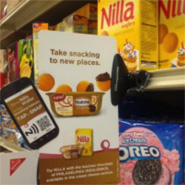 Kraft, with the help of additional companies, recently tested out an NFC program designed to explore the tap and engage experience offered by NFC. RFID chips that could be read by NFC-enabled smartphones were placed in signage on the shelves right in front of Kraft cheese and Nabisco cookie brands. Shelftalkers encouraged consumers to tap their smartphones to retrieve various recipe content, download the i-Food Assistant app or share on Facebook.
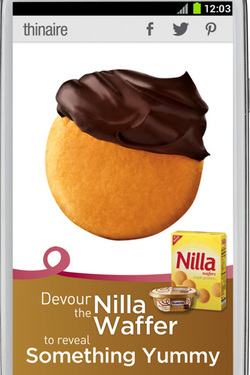 In one example, shelftalkers promoted the launch of a new Philadelphia Indulgence chocolate cream cheese. The shelftalkers were strategically placed in front of the cream cheese flavor as well as in front of Nilla Wafers, with recipes suggesting how to use both to create a dessert dish. When consumers tapped on the shelftalker, a screen opened up showing a Nilla Wafer that had a bite taken out of it each time a user touched the screen. Once the wafer was gone, consumers could access recipes, download the i-Food Assistant app or share on Facebook.
The results show that the overall engagement level was 12 times higher than for QR codes, which also appeared on the signs. Also, more than 36 percent of shoppers who tapped the NFC-enhanced shelftalker converted into an action, such as saving a recipe, downloading the Kraft app or sharing with friends. In addition, consumers spent 48 seconds engaging with the brand when NFC was involved compared to the five to 10 seconds consumers typically spend at the shelf choosing a product.
As of right now, there are not a lot of smartphones that have the NFC technology embedded; thus limiting its use as a marketing tool. However, this will change over the next couple of years as more phones are equipped with this technology and marketers look to integrate NFC into their marketing efforts. Until then, 2D codes will continue to be a valuable tool for companies and a great way for companies to differentiate its brand.
In Jeanne Hopkins and Jamie Turner's novel, Go Mobile, they talk about how to use mobile display ads to grow your sales. The authors explain that understanding the technical specs of a mobile display campaign is important but even more critical is what you do with the ads. They state, "It's one thing to run a traditional mobile banner ad that's static; it's another thing entirely to run a banner ad that engages your prospects and converts them to customers."
A company who understands this concept is Target. 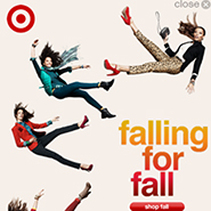 “Falling for Fall” is Target’s theme for its new interactive mobile advertising campaign. The goal of the campaign is to encourage consumers to buy using their smartphones. Target has used mobile advertising for the past few years to drive in-store traffic and increase mobile sales; however, the new campaign uses rich media, which makes it more interactive and visually appealing. Marci Troutman, CEO of SiteMinis, commented, “The Target mobile ad is very creative with the fall colors and graphics to encourage viewers to click once they see the fashions on the models.”
When consumers tap on the mobile banner ad, the page expands to show several models gradually “falling” while wearing the season’s latest looks. Consumers are prompted to click on the “Shop Fall” button, which redirects them to Target’s mobile-optimized site. From there, consumers can shop the latest looks, browse other categories, and also download the Target’s iPhone app. This mobile marketing strategy is smart for a company like Target to accomplish its ultimate goal to get consumers to buy using their smartphones. Troutman makes an important remark, “Maintaining the attention of the consumer through the process with less clicks and quick rewards for the their time is the key to a successful mobile ad campaign.” Target abides by this rule; therefore, increasing the likelihood that the campaign will be a success.
 Walmart embraces augmented reality to enhance in-store shoppingWalmart continues to demonstrate its commitment to enhance the in-store shopping experience for its customers through the release of a new augmented reality application. The app is part of Nickelodeon’s marketing strategy for a new Teenage Mutant Ninja Turtles TV series and is available only at Walmart Canada this September 20 through the 27. The app allows users to get an augmented reality experience by interacting with special in-store signage located throughout Walmart stores, online and in the retailer’s weekly flyer. To download the app, in-store shoppers can look for Ninja Turtles signs in the toy, apparel and entertainment departments. The launch of the app coincides with the new line of Teenage Mutant Ninja Turtles merchandise.
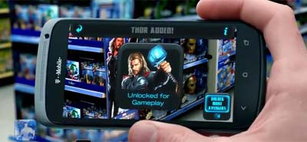 Earlier this year, Walmart introduced augmented reality apps in the United States as part of its in-store marketing activities for the films The Avengers and The Amazing Spiderman. The apps enabled its customers to turn their in-store shopping experience into an engaging and fun scavenger hunt. Walmart incorporated augmented reality in its campaign to help attract attention and bring in new customers who might not normally shop there. Mr. Nawara, vice president of emerging solutions and innovation at Acquity Group, Chicago stated, “If used in the right way, augmented reality can eventually lead to an increase in transactions and cart size by augmenting reality with additional information that a shopper can use.” Augmented reality is still a relatively new concept to many brands and consumers and most are still learning how to use it. According to Mr. Nawara, “The idea of augmented reality shopping is one that is coming… it is going to happen as a way for finding the way around a store.” I’m anxious to try out an augmented reality app and have that in-store experience when a store that I’m interested utilizes it. To be most effective, companies should give customers an incentive to use the app. For example, the app could send in-store shoppers on a scavenger hunt around the store with tasks to complete and once they fulfill the requirements they would receive a 20% discount.
|





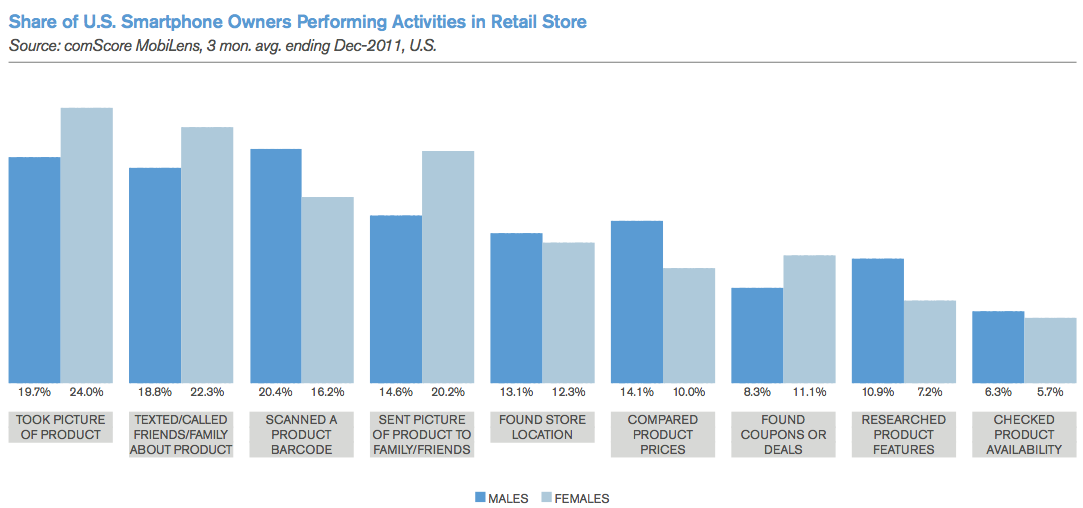







 RSS Feed
RSS Feed